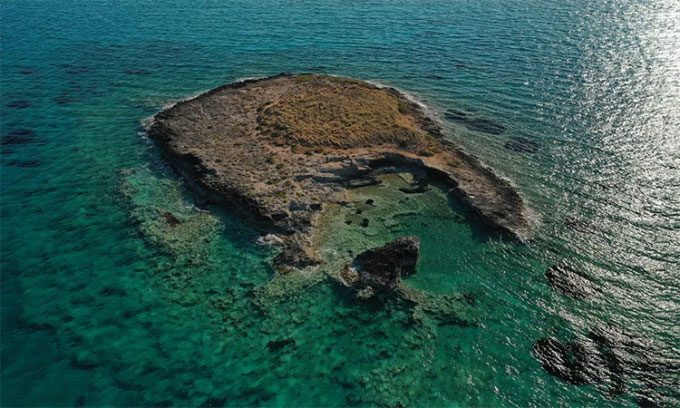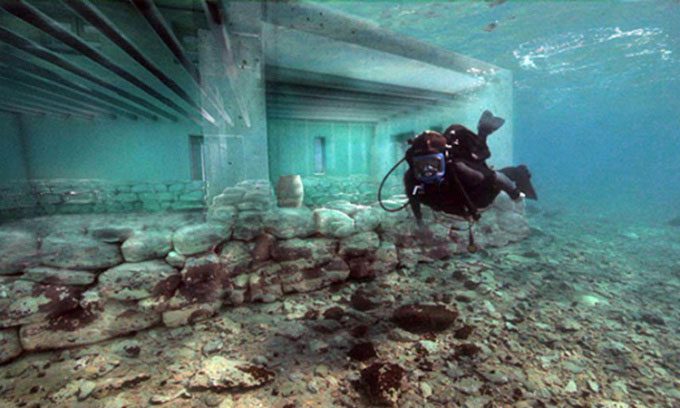Pavlopetri is an ancient city located in Greece, found beneath the sea near the coast of the Peloponnese. This city dates back approximately 5,000 years and is believed to have sunk to the seabed around 1,000 BC. However, the exact cause of Pavlopetri’s submersion remains a mystery.
Underwater archaeological discoveries, such as lost cities, hidden artifacts, or shipwrecks, have garnered significant interest from scientists. A remarkable example of such a discovery is Pavlopetri, which is thought to be the oldest submerged city in the world.

Aerial view of the Bronze Age city of Pavlopetri. (Photo: Aerial-motion)
The city was first identified by geologist Folkion Negris in 1904. In 1967, marine archaeologist Nicholas Flemming from the University of Southampton’s Oceanography Institute rediscovered this Bronze Age city. Flemming described the city as lying under approximately 3 to 4 meters of water. In 1968, he returned with a team of archaeologists from the University of Cambridge to continue surveying the extensive ruins for six weeks.
Using a grid system and measuring tape, the team mapped out the city, estimating it to cover an area of 300 meters by 150 meters. The city contains at least 15 distinct buildings, plazas, five streets, two tombs, and at least 37 cist graves—small stone-built graves used to hold remains. They also discovered that the underwater city continues to extend southwards towards Pavlopetri Island, which preserves remnants of walls and other archaeological materials.
During the research, the team also retrieved several artifacts from the seabed, including pottery, stone tools made from flint and chert, and a small bronze statue dating from around 2800 to 1180 BC. However, the buildings of the submerged city primarily belong to the Mycenaean period, around 1650 to 1180 BC.

Underwater ruins of the ancient city of Pavlopetri combined with digitally reconstructed columns and walls. (Photo: Pavlopetri Underwater Archaeology Project)
In 2009, a research team from the Underwater Antiquities Agency of the Greek Ministry of Culture, the Greek Sea Research Center, and the University of Nottingham launched a five-year project to explore Pavlopetri in detail. They aimed to gain a deeper understanding of the city’s history through a comprehensive digital archaeological survey and a series of underwater excavations.
During the survey, the research team discovered an additional 9,000 m2 of new structures, including a large rectangular hall and additional structures along a previously undiscovered street. They also found stone-paved graves and pithos jars—large ceramic vessels used for preserving bodies before burial or cremation.
The scientists also uncovered pottery that confirmed Mycenaean habitation in Pavlopetri and evidence suggesting that the city was occupied throughout the Bronze Age, from around 3000 to 1100 BC. During this period, Pavlopetri’s population is estimated to have been between 500 and 2,000 people.
The reason Pavlopetri sank to the seabed remains a mystery. Some experts speculate that an earthquake around 1000 BC or in 375 AD may have submerged this city.





















































